Super guitars: 11 axes from the future

Super guitars: 11 axes from the future
An axe vying for ‘super guitar’ status must offer considerably more than the standard combination of wood, string and magnetic pickups.
Whether it's robotic self-tuning technology, piezo or hexaphonic pickups for multiple voices, modelling, or a built-in MIDI control pad, what follows will prove that the electric guitar has come a long way since Les Paul and Leo Fender's early solidbody experiments.
In an industry obsessed with the design and tonal benchmarks set by the big guns in the 1950s and 1960s, some of the futuristic instruments we've selected have had a tough time finding acceptance. But with contemporary guitar heroes like Muse’s Matt Bellamy latching on to the sonic potential of onboard effects, will a day come when the Fender Stratocaster and Gibson Les Paul are as outmoded as the Model T Ford?
Featured roughly in order of release, each model here boasts at least one feature that warrants 'super' status. The world’s biggest guitar brand, Fender, is conspicuous by its absence, although it’s only fair to point out that the company’s Roland-partnering VG Stratocaster would be present had it not been recently discontinued.
First up, though, is a company that has been making jaws drop with its electric guitar designs since the then-outrageous outlines of the Flying V and Explorer in the 1950s; it's Gibson and the HD.6X-Pro Digital Guitar…
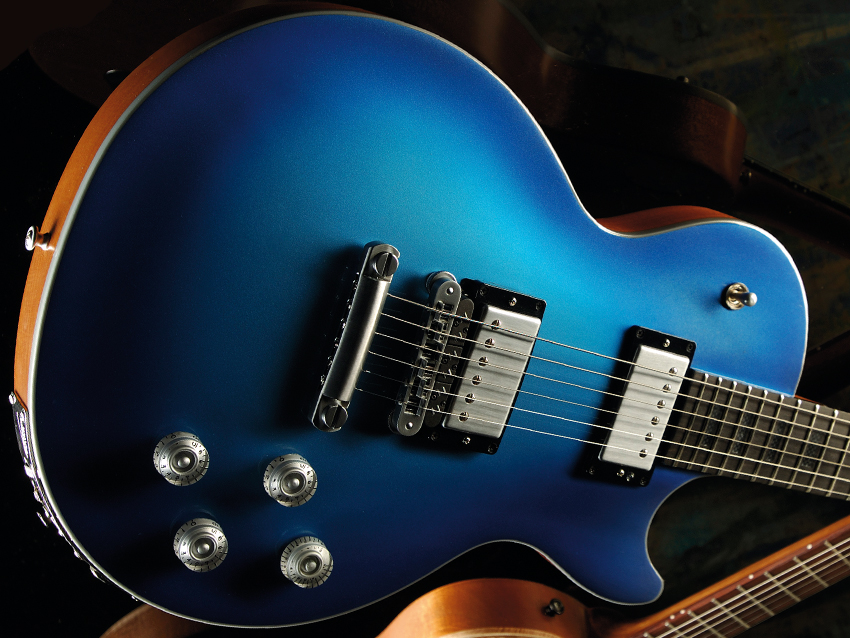
Gibson HD.6X-Pro Digital Guitar
What makes it super?
When the HD.6X-Pro launched back in the summer of 2007, it was the only guitar in the world capable of outputting the sound of each string individually straight out of the box. The onboard hexaphonic pickup carries the digital signal via ethernet port to a breakout box then your computer.
Being able to adjust the volume, EQ and the position in the stereo image of each string individually - not to mention the ability to apply completely separate effects processing and amplification to each string - drastically expands the horizon for tech-savvy guitarists. As with some other notable innovations in Gibson’s back catalogue, the HD.6X-Pro was arguably too far ahead of its time.
FULL REVIEW: Gibson HD.6X-Pro Digital Guitar
Next: Gibson Robot Guitar
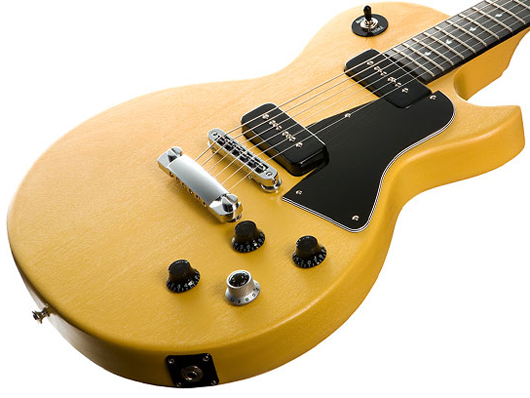
Gibson Robot Guitar
What makes it super?
Enter the Tronical Powertune automated tuning system and the name that would perhaps come to define Gibson’s current crop of super axes, the Robot. Not only does it self-tune but it also features a rotary Master Control Knob that gives access to a range of customisable alternate tunings including Open E, DADGAD, Drop D and more.
Gibson took the Robot brand a step further in 2008 by releasing a Robot Les Paul Studio and SG Special, and then again in 2010 with what we think is Gibson’s best-looking super guitar yet, the Robot Les Paul Jr Special (pictured above). Yes, it looks just like a '50s Les Paul Special, but that's the point. We guitarists are a conservative bunch.
READ: Gibson launches Robot Guitar
Next: Carvin SH575
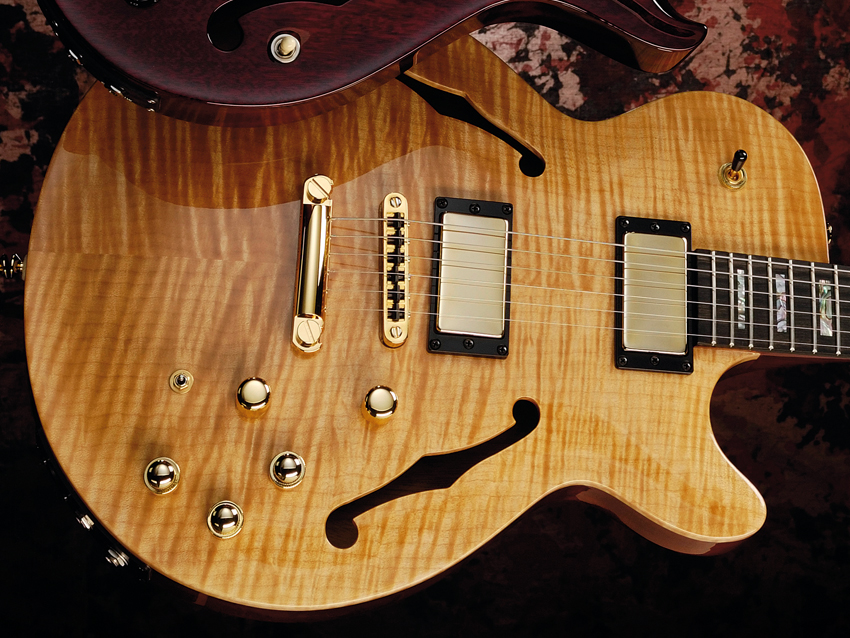
Carvin SH575
What makes it super?
The first of several ‘three voice’ guitars armed with a piezo for acoustic sounds, two Carvin S22 covered humbuckers for electric and a 13-pin hexaphonic MIDI-compatible output for synth access.
Unlike the other super axes here, however, this technology is loaded into a single-cutaway, semi-hollow body. Power for the circuitry - a single 9V battery - is rear-mounted and accessed via a flip-top lid: simple but convenient.
FULL REVIEW: Carvin SH575
Next: Godin xtSA
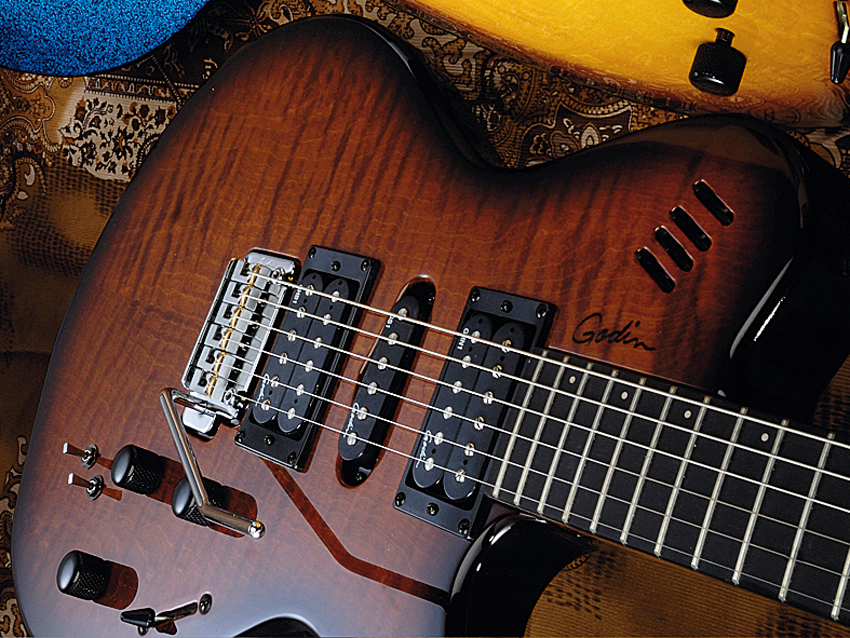
Godin xtSA
What makes it super?
Godin has been at the forefront of building guitars that offer acoustic tones from bridge transducers alongside the standard electric sounds for years. The xtSA adds a ‘third voice’ by functioning as a synth controller via a standard 13-pin output that will connect to a Roland guitar synth or others that use the same protocol.
The potentially confusing user interface is uncluttered and easy to use with a combination of 13-pin output plus two jacks that allow either mixing or separation of electric and acoustic sounds. There's a three-way toggle switch that selects synth only, audio only or a blend of the two, with the volume of synth sound in the mix being controlled by an adjacent knob. A non-latching toggle switch is used to step through the patches on any connected synth unit.
FULL REVIEW: Godin xtSA
Next: Gibson Dark Fire
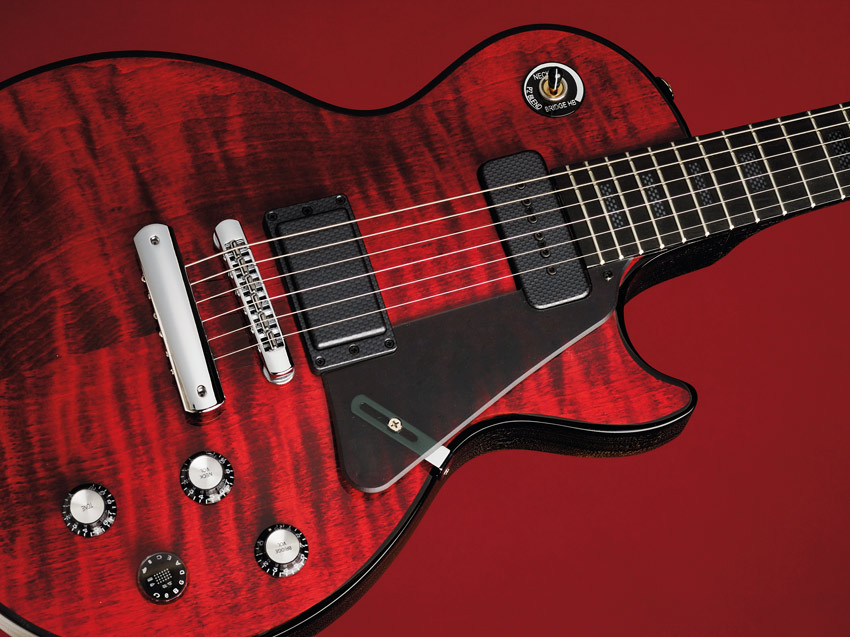
Gibson Dark Fire
What makes it super?
With the Dark Fire, Gibson took the self-tuning Robot functionality and the HD.6-X Pro computer connectivity and merged them to create what was, in 2009, "the world's most powerful analogue and digital guitar," despite some problems with the initial production run.
The Master Control Knob (MCK) - an ultra-sophisticated pull/push knob with a multi-coloured illuminated display - sits at the heart of the Dark Fire’s seemingly endless capabilities. Chameleon Tone technology, second-generation Robot tuning with motorised machineheads and a Robot Interface Pack for seamless computer connectivity are just the tip of the iceberg - hit up the review for a video overview.
FULL REVIEW: Gibson Dark Fire
Next: Manson Guitars MB-1 Standard Matt Bellamy signature guitar
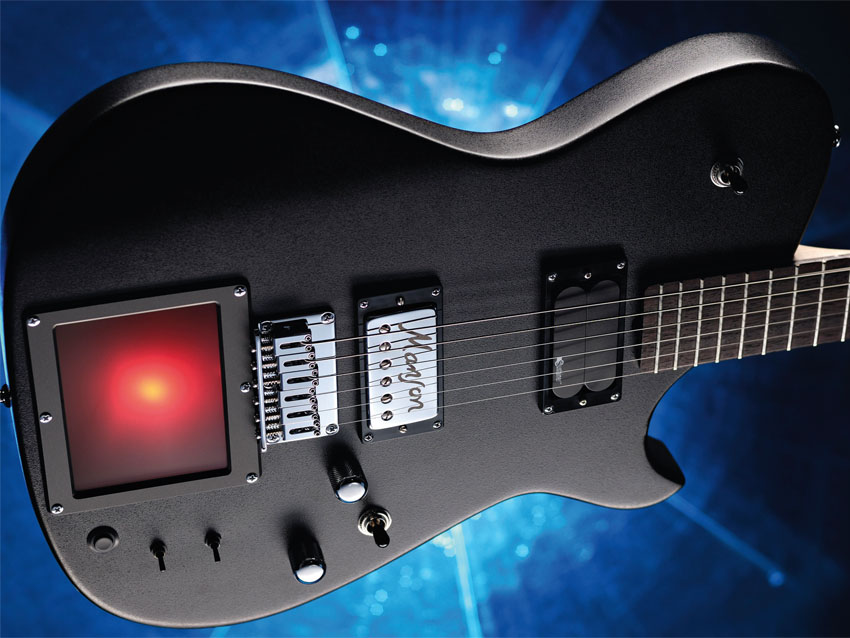
Manson Guitars MB-1 Standard Matt Bellamy signature guitar
What makes it super?
The MB-1 is based on Muse frontman Matt Bellamy’s own cracked mirror M1D1 with a slightly longer body to make space for the X-Y MIDI control pad behind the bridge. This is set up to use with both Korg's KP-3 Kaoss Pad and DigiTech's Whammy pedal straight out of the box.
Plug into the Kaoss Pad and you can expect to treat, effect, filter and sample any sound that you can get the guitar to make. Hook up to a DigiTech Whammy and, by moving your finger from treble to bass side on the screen, your finger effectively ‘moves’ the pedal’s treadle, while tapping two fingers on the screen creates pitch effects you just can’t get with your foot alone. The Fernandes Sustainer pickup in the neck adds another fun, futuristic dimension.
FULL REVIEW: Manson Guitars MB-1 Standard Matt Bellamy signature guitar
Next: Parker Fly Mojo MIDI
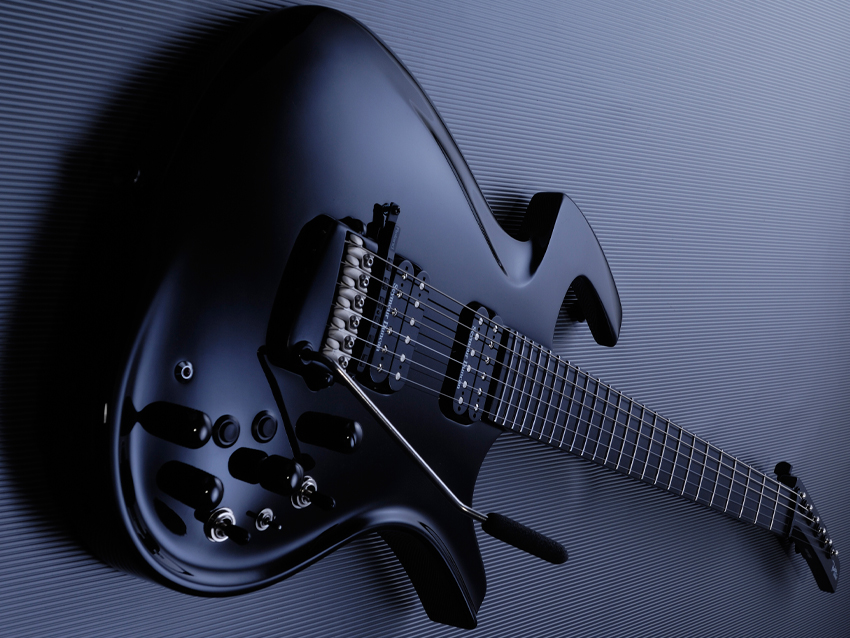
Parker Fly Mojo MIDI
What makes it super?
Parker has been breaking the traditional guitar mould since 1993, with the original Fly incorporating a radical shape and construction method and a piezo saddle bridge as standard to add pseudo-acoustic sounds; effectively a ‘two-voice’ instrument and one of the first to stake a claim to super guitar status. The Fly Mojo MIDI adds synth access, and thus a third voice.
The Roland GK-KIT-GT3 Divided Pickup allows for full integration with the Roland V-Guitar system, the GR-20 synth, or anything else that can take the 13-pin signal. It means you can access the modelled guitar and amp sounds and altered tunings found in the VG-99 plus the sounds of any synths or samplers connected via MIDI. In the right hands, its potential is limitless.
FULL REVIEW: Parker Fly Mojo MIDI electric guitar
Next: Gibson Dusk Tiger
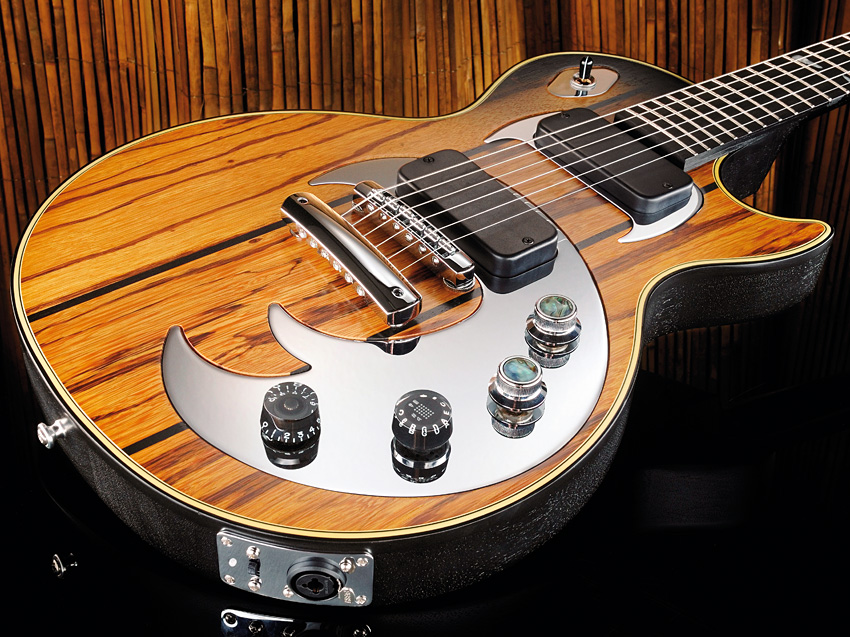
Gibson Dusk Tiger
What makes it super?
The Dusk Tiger combines and refines many of its predecessors’ features, offering the new and improved third generation of Robot technology and a redesigned Master Control Knob - the MCK II - addressing some of the usability issues that hobbled the Dark Fire. In addition, Gibson's Chameleon tone-editing software allows deep access to its sounds. You can sculpt a tone in terms of EQ, pickup selection, phase, coil-split and piezo blend, design a tuning to go with it and save the whole thing in one of the user preset slots for on-the-fly access.
Unfortunately, the Dusk Tiger’s appearance was the subject of a great deal of disdain on its release, overshadowing its innovative new features. Still, progress is progress whether you like the combination of marblewood top, chrome-plated bling and tigerstripe back or not. We kinda dig this kitty's pimped-out style. Grrrrr.
FULL REVIEW: Gibson Dusk Tiger
Next: Moog E1
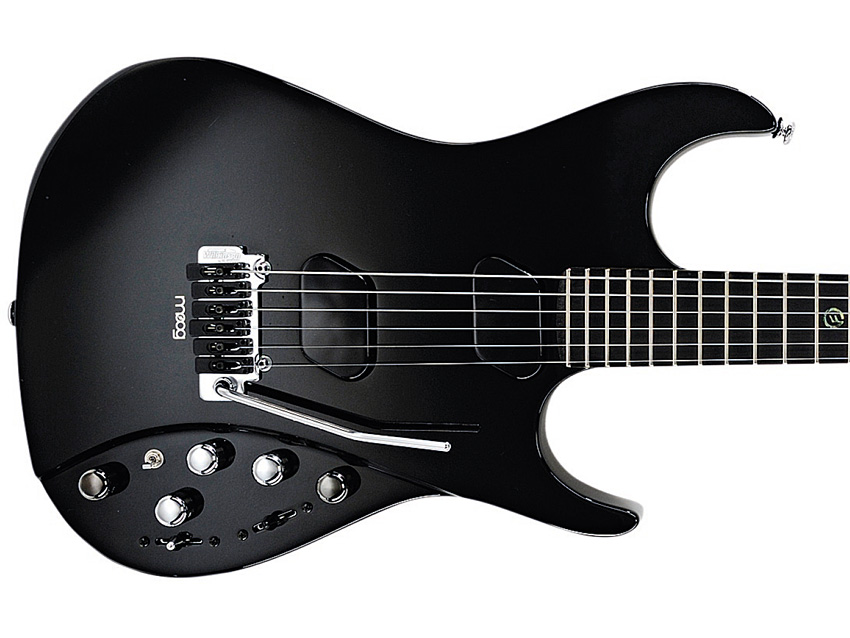
Moog E1
What makes it super?
The first incarnation of the Moog guitar was almost dismissed as an elaborate April Fool’s joke, until we actually played and reviewed the very real Paul Vo Collector’s Edition Prototype. The first production model, the E1, followed in early 2010; a conventional two-pickup electric with blendable onboard piezo and a very unconventional onboard Moog filter for wah and envelope effects.
The E1’s raison d'être is to provide ‘infinite sustain’ - a function known as ‘Vo Power’ in Moogspeak. A bundled foot pedal houses the main guitar output and plugs into the mains, powering the whole ensemble.
FULL REVIEW: Moog E1
Next: Line 6 James Tyler Variax JTV-69US
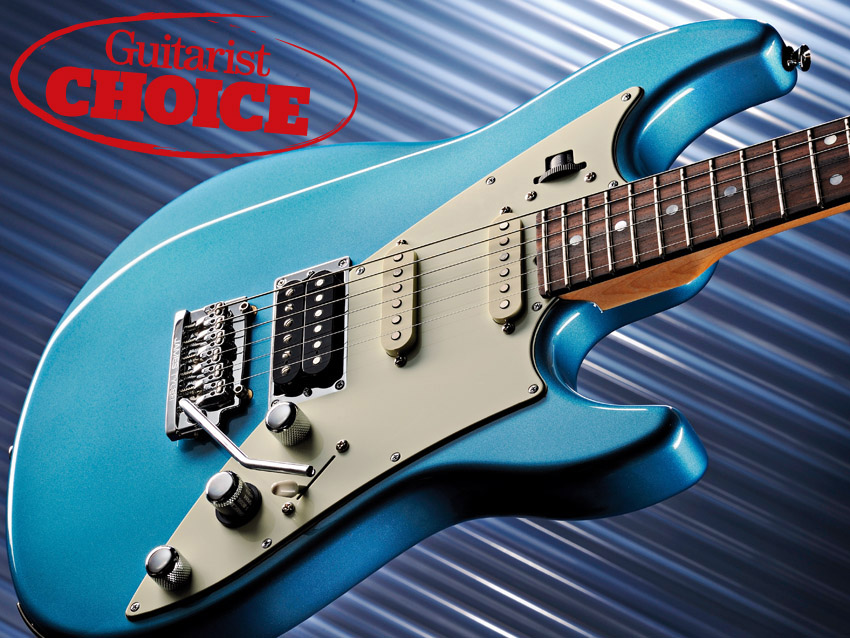
Line 6 James Tyler Variax JTV-69US
What makes it super?
First launched in 2003, Line 6’s original Variax was ‘the world’s first digital modelling guitar’, and the range went on to encompass nylon and steel-string acoustic instruments alongside bass and electric guitars. While much has been made of the new-for-2010 James Tyler-designed incarnation's physical improvements, the digital side of the equation is foolish to ignore; this is the best sounding Variax yet.
Powered by a lithium-ion rechargeable battery, the Tyler Variax carries 10 banks and 50 sounds (plus two additional custom banks) based on some 25 classic guitars. There’s also an Alternate Tuning control (although the Variax doesn't physically retune your strings - they stay in standard pitch and the outputted sounds are pitch-shifted); a ‘virtual capo’ feature; and an LR Baggs Radiance Hex piezo for acoustic duties. Line 6's bundled Workbench software allows you to create custom sounds and tunings.
FULL REVIEW: Line 6 James Tyler Variax JTV-69US
Next: Fret-King Super-Matic

Fret-King Super-Matic
What makes it super?
It tunes itself, but while Gibson’s Robot system houses the string motors in the tuners, the Super-Matic’s Trev Wilkinson-designed ATDHT440 bridge is where all the magic happens. We expect Wilkinson to sell ATDHT440s by the bucketload if they become available as a retrofit for Strats.
There are six built-in presets which you can programme yourself if the factory tunings aren't to your taste. Apart from a small lozenge-shaped LED readout on the bass-side and a simple push-switch operating 'OP' button that accesses self-tuning and the unit's other functions on the treble side, the rest of the instrument is pretty standard. However, it’s worth noting that the Fret-King Super-Matic is not only the most efficient and affordable self-tuning guitar to date, but it's also flying the flag for British innovation.
FULL REVIEW: Fret-King Super-Matic
Liked this? Now read: The best electric guitars under £1000
Connect with MusicRadar: via Twitter, Facebook and YouTube
Get MusicRadar straight to your inbox: Sign up for the free weekly newsletter
Tom Porter worked on MusicRadar from its mid-2007 launch date to 2011, covering a range of music and music making topics, across features, gear news, reviews, interviews and more. A regular NAMM-goer back in the day, Tom now resides permanently in Los Angeles, where he's doing rather well at the Internet Movie Database (IMDB).
“These guitars travel around the world and they need to be road ready”: Jackson gives Misha Mansoor’s Juggernaut a new lick of paint, an ebony fingerboard and upgrades to stainless steel frets in signature model refresh
“It’s about delivering the most in-demand mods straight from the factory”: Fender hot-rods itself as the Player II Modified Series rolls out the upgrades – and it got IDLES to demo them
“These guitars travel around the world and they need to be road ready”: Jackson gives Misha Mansoor’s Juggernaut a new lick of paint, an ebony fingerboard and upgrades to stainless steel frets in signature model refresh
“It’s about delivering the most in-demand mods straight from the factory”: Fender hot-rods itself as the Player II Modified Series rolls out the upgrades – and it got IDLES to demo them



![PRS Archon Classic and Mark Tremonti MT 15 v2: the newly redesigned tube amps offer a host of new features and tones, with the Alter Bridge guitarist's new lunchbox head [right] featuring the Overdrive channel from his MT 100 head, and there's a half-power switch, too.](https://cdn.mos.cms.futurecdn.net/FD37q5pRLCQDhCpT8y94Zi.jpg)





